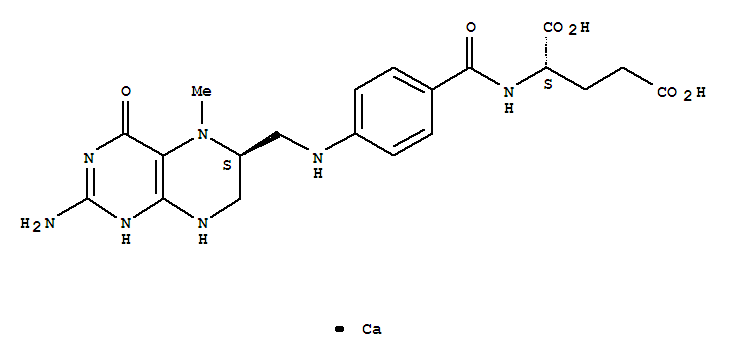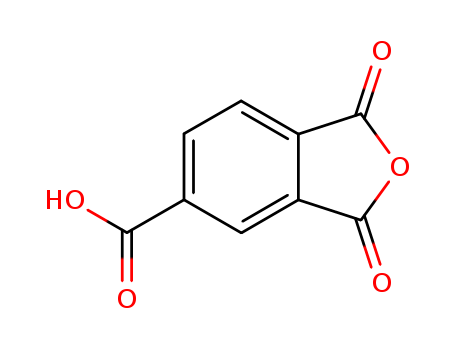- Product Details
Keywords
- 123-31-9
- hydroquinone
- 1,4-Benzenediol
Quick Details
- ProName: hydroquinone/99%/123-31-9
- CasNo: 123-31-9
- Molecular Formula: C6H6O2
- Appearance: off-white powder or white needle-like ...
- Application: Pharmaceutical Intermediate
- DeliveryTime: 2-3day
- PackAge: as required
- Port: Shanghai or Other
- ProductionCapacity: 1000 Metric Ton/Month
- Purity: 99(%)
- Storage: Store in dry, dark and ventilated plac...
- Transportation: by sea or by air
- LimitNum: 1 Kilogram
Superiority
Changzhou Xuanming Chemical Co., Ltd. is dedicated to the technology development, manufacturing, import and export chemicals, which are specialized in pharmaceutical intermediates, pesticide intermediate, industry of fine chemicals and custom synthesis. Now, we enjoy good reputation among customers and take favorable market share in domestic and at abroad.
Changzhou Xuanming Chemical CO., LTD is located in Northern Jiangshu Industry Park, we have modern manufacture bases and some laboratories, which can supply the key intermediate for your projects, and short your synthesis scheme and supply you a reference compound for bioassay or a high purity analytical standard. We have been abided by “treat technology as first, quality as basis, customers as God, and be honest and sincere”. It is our final aim to provide environmental and high technological products and meet customers’ requirements according to keep effors on developing new chemical fields.
Changzhou Xuanming Chemical CO., LTD promises to help you with heart and soul.
Details
|
Description
|
|
Properties
|
|
| Appearance & Physical State: | off-white powder or white needle-like crystals |
|---|---|
| Density: | 1.332 |
| Melting Point: | 170-174ºC |
| Boiling Point: | 285-287ºC |
| Flash Point: | 165ºC |
| Refractive Index: | 1.689 |
| Water Solubility: | 70 g/L (20 ºC) |
| Stability: | Stable. Combustible. Incompatible with strong oxidizing agents, strong bases, oxygen, ferric salts. Light and air-sensitive. Discolours in air. |
| Vapor Pressure: | 1 mm Hg ( 132 °C) |
| Vapor Density: | 3.81 (vs air) |
|
Safety Info
|
|
| Symbol: |
GHS05 GHS07 GHS08 GHS09 |
|---|---|
| Sign: | Danger |
| hazard declaration: | H302; H317; H318; H341; H351; H410 |
| hazard declaration add: | |
| waring notice: | P201; P273; P280; P305 + P351 + P338 + P310; P308 + P313 |
| RTECS: | MX3500000 |
| Hazard Class: | 9 |
| Safety Statements: | S26-S36/37/39-S61 |
| HS Code: | 2907221000 |
| Packing Group: | III |
| WGK Germany: | 3 |
| RIDADR: | UN 2662 |
| Risk Statements: | R22; R40; R41; R43; R50; R68 |
| Hazard Codes: | Xn |
| Hydroquinone Usage And Synthesis |
| Chemical Properties | white needle-like crystals or crystalline powder |
| Chemical Properties | Hydroquinone, a colorless, hexagonal prism, has been reported to be a good antimitotic and tumor-inhibiting agent. It is a reducing agent used in a photographic developer, which polymerizes in the presence of oxidizing agents. In the manufacturing industry it may occur include bacteriostatic agent, drug, fur processing, motor fuel, paint, organic chemicals, plastics, stone coating, and styrene monomers. |
| Physical properties | Colorless to pale brown, odorless, hexagonal crystals |
| Uses | Use as photographic reducer and developer; as reagent in the determination of small quantities of phosphate; as antioxidant. Depigmentor |
| Uses | hydroquinone is a pigment-lightening agent used in bleaching creams. Hydroquinone combines with oxygen very rapidly and becomes brown when exposed to air. Although it occurs naturally, the synthetic version is the one commonly used in cosmetics. Application to the skin may cause allergic reaction and increase skin sun sensitivity. Hydroquinone is potentially carcinogenic and is associated with causing ochronosis, a discoloration of the skin. The u.S. FDA has banned hydroquinone from oTC cosmetic formulations, but allows 4 percent in prescription products. Its use in cosmetics is prohibited in some european countries and in Australia. |
| Uses | K channel agonist, antihypertensive |
| Uses | reducing agent prevents polymerization of resin monomers lightens darkened skin, light sensitive |
| Uses | As photographic reducer and developer; as reagent in the determination of small quantities of phosphate; as antioxidant. |
| Definition | ChEBI: A benzenediol comprising benzene core carrying two hydroxy substituents para to each other. |
| Indications | Hydroquinone interferes with the production of the pigment melanin by epidermal melanocytes through at least two mechanisms: it competitively inhibits tyrosinase, one of the principal enzymes responsible for converting tyrosine to melanin, and it selectively damages melanocytes and melanosomes (the organelles within which melanin is stored). |
| Brand name | Aida;Ambi- skin tone;Black and white;Creme des 3 fleur d'orient;Eldopaque forte;Eldoquin forte 4% cream;Epocler;Esoterica facial;Esoterica regular;Esoterica sensitive skin;Esoterica sunscreen;Melanex topical sollution;Melpaque hp;Melqui hp;Neostrata aha gel;Neostrata hq;Nuquin hp;Pigmanorm;Porcelana;Sinquin;Solaquin forte sun bleaching;Superfade age spot;Ultraquin plaine. |
| World Health Organization (WHO) | Hydroquinone was introduced in 1965 as a topical depigmenting agent for hyperpigmentation. At high concentrations hydroquinone is corrosive and in most countries has been restricted to the level of approximately 2% and limited to the period of less than 2 months. Additional consideration for restrictive action is that animal experiments have also demonstrated carcinogenic and mutagenic potential of hydroquinone. |
| General Description | Light colored crystals or solutions. May irritate the skin, eyes and mucous membranes. Mildly toxic by ingestion or skin absorption. |
| Air & Water Reactions | Darkens on exposure to air and light. Miscible in water. Solutions become brown in air due to oxidation. Oxidation is very rapid in the presence of alkali. |
| Reactivity Profile | Hydroquinone is a slight explosion hazard when exposed to heat. Incompatible with strong oxidizing agents. Also incompatible with bases. Hydroquinone reacts with oxygen and sodium hydroxide. Reacts with ferric salts . Hot and/or concentrated NaOH can cause Hydroquinone to decompose exothermically at elevated temperature. (NFPA Pub. 491M, 1975, 385) |
| Hazard | Toxic by ingestion and inhalation, irritant. Questionable carcinogen. |
| Health Hazard | Exposures to hydroquinone in large quantities by accidental oral ingestion produce toxicity and poisoning. The symptoms of poisoning include, but are not limited to, blurred speech, tinnitus, tremors, sense of suffocation, vomiting, muscular twitching, headache, convul- sions, dyspnea and cyanosis from methemoglobinemia, coma, and collapse from respira- tory failure. Occupational workers should be allowed to work with protective clothing and dust masks with full-face or goggles to protect the eyes, and under proper management. |
| Health Hazard | Hydroquinone is very toxic; the probable oral lethal dose for humans is 50-500 mg/kg, or between 1 teaspoon and 1 ounce for a 150 lb. person. It is irritating but not corrosive. Fatal human doses have ranged from 5-12 grams, but 300-500 mg have been ingested daily for 3-5 months without ill effects. Death is apparently initiated by respiratory failure or anoxia. |
| Fire Hazard | Dust cloud may explode if ignited in an enclosed area. Hydroquinone can react with oxidizing materials and is rapidly oxidized in the presence of alkaline materials. Oxidizes in air. |
| Contact allergens | Hydroquinone is used in photography developers (black and white, X-ray, and microfilms), in plastics, in hair dyes as an antioxidant and hair colorant. Hydroquinone is found in many skin bleaching creams. |
| Clinical Use | Hydroquinone is applied topically to treat disorders characterized by excessive melanin in the epidermis, such as melasma. In the United States, nonprescription skin-lightening products contain hydroquinone at concentrations of 2% or less; higher concentrations are available by prescription. |
| Side effects | The incidence of adverse effects with hydroquinone increases in proportion to its concentration. A relatively common side effect is local irritation, which may actually exacerbate the discoloration of the skin being treated. Allergic contact dermatitis occurs less commonly. A rare but more serious complication is exogenous ochronosis, in which a yellow-brown pigment deposited in the dermis results in blue-black pigmentation of the skin that may be permanent. |
| Source | Hydroquinone occurs naturally in strawberry tree leaves, pears, blackberries, Chinese alpenrose, bilberries, blackberries, hyacinth flowers, anise, cowberries, and lingonberries (Duke, 1992). |
| Environmental fate |
Biological. In activated sludge, 7.5% mineralized to carbon dioxide after 5 d (Freitag et al., 1985). Under methanogenic conditions, inocula from a municipal sewage treatment plant digester degraded hydroquinone to phenol prior to being mineralized to carbon dioxide and methane (Young and Rivera, 1985). In various pure cultures, hydroquinone degraded to the following intermediates: benzoquinone, 2-hydroxy-1,4-benzoquinone, and β-ketoadipic acid. Hydroquinone also degraded in activated sludge but no products were identified (Harbison and Belly, 1982). Heukelekian and Rand (1955) reported a 5-d BOD value of 0.74 g/g which is 39.2% of the ThOD value of 1.89 g/g. In activated sludge inoculum, following a 20-d adaptation period, 90.0% COD removal was achieved. The average rate of biodegradation was 54.2 mg COD/gh (Pitter, 1976). Photolytic. A carbon dioxide yield of 53.7% was achieved when hydroquinone adsorbed on silica gel was irradiated with light (λ >290 nm) for 17 h (Freitag et al., 1985). Chemical/Physical. Ozonolysis products reported are p-quinone and dibasic acids (Verschueren, 1983). Moussavi (1979) studied the autoxidation of hydroquinone in slightly alkaline (pH 7 to 9) aqueous solutions at room temperature. The oxidation of hydroquinone by oxygen followed first-order kinetics that yielded hydrogen peroxide and p-quinone as products. At pH values of 7.0, 8.0, and 9.0, the calculated half-lives of this reaction were 111, 41, and 0.84 h, respectively (Moussavi, 1979). Chlorine dioxide reacted with hydroquinone in an aqueous solution forming p-benzoquinone (Wajon et al., 1982). Kanno et al. (1982) studied the aqueous reaction of hydroquinone and other substituted aromatic hydrocarbons (aniline, toluidine, 1- and 2-naphthylamine, phenol, cresol, pyrocatechol, resorcinol, and 1-naphthol) with hypochlorous acid in the presence of ammonium ion. They reported that the aromatic ring was not chlorinated as expected but was cleaved by chloramine forming cyanogen chloride. As the pH was lowered, the amount of cyanogen chloride formed increased (Kanno et al., 1982). At influent concentrations of 1.0, 0.1, 0.01, and 0.001 mg/L, the GAC adsorption capacities were 160, 90, 51, and 29 mg/g, respectively (Dobbs and Cohen, 1980). |
| Purification Methods | Crystallise quinol from acetone, *benzene, EtOH, EtOH/*benzene, water or acetonitrile (25g in 30mL), preferably under nitrogen. Dry it under vacuum. [Wolfenden et al. J Am Chem Soc 109 463 1987, Beilstein 6 H 836, 6 IV 5712.] |








